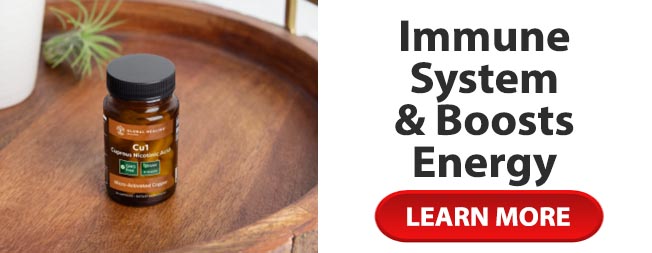Burns First Aid
Burns are injuries to tissues caused by fire, the sun, chemicals, heated objects, electricity, radiation, friction, fluids, or other means that can destroy skin. Burns can be trivial medical problems or life-threatening emergencies. Burns are characterized by degree determined by the severity of the damage of the tissues. And burn treatment depends on this severity and size of the burn.
Burns on fingers and hands are usually not dangerous but at times it may develop severe complications. You can treat minor burns at home following first-aid measures, such as cooling the skin and applying an anesthetic cream or aloe gel to the affected portion of your skin. Deep or widespread burns require prompt medical attention.
To differentiate a minor burn from a serious burn, the first step is to measure the extent of damage of the body tissues. The three burn classifications of first-degree burn, second-degree burn and third-degree burn will help you settle on emergency care:
First Degree Burn
The least serious burns are those in which only the outer layer of skin, called Epidermis, is get affected, but not all the way through. The skin usually becomes red (erythema), with swelling. Minor pain sometimes is present at the site of the injury. Most sunburn can be regarded as first degree burns. Treat a first-degree burn as a minor burn unless it involves considerable area of the hands, feet, face, groin or buttocks, or a major joint, that requires emergency medical attention.
Second Degree Burn
When the first layer of skin has been burned through and the second layer of skin (dermis) gets affected too that can involve more or less pain depending on the extent of nerve damage, the injury is called a second-degree burn. A second degree burn can be determined by:
Blistering of the skin accompanied by intense redness
- Splotchy appearance
- Severe pain
- Swelling
If the burn involves larger area or if the burn is on the hands, feet, face, groin or buttocks, or over a major joint, consider it as a major burn and get medical aid without delay.
First Degree and Second Degree burn are generally considered minor burns.
If a second-degree burn does not happen to be larger than 3 inches (7.6 centimeters) in diameter, treat it as a minor burn.
Self-Care at Home
Stop the burning process
The most important initial measure to be taken is to stop the burning process. Extinguish any fire or flames immediately (the common instruction is to \’stop, drop, and roll\’ to put out flames on your clothing). Try to take away hot or burned clothing, if possible, or avoid contact with the hot steam, liquid, or any hot object.
Cool the affected area
Apply water (not ice) on the affected area within 30 seconds to cool the injured portion. This may limit the amount and severity of the burn. Run your burned hand or finger immediately under cool tap water for several minutes to restrict it from swelling or becoming red.
Control the pain
Apply a cool wet compress for pain relief but do not apply ice. This may aggravate the injury to the skin.
Other common remedies, such as applying butter or mayonnaise have not been proven to be fruitful; and may even increase the risk of infection.
You may also use acetaminophen (Tylenol) or ibuprofen (Advil) for relieving pain as directed on the label of the bottle.
Cover the burn with sterile gauze bandage
Cover the burn with a sterile gauze bandage rather than using fluffy cotton, or other material that may get lint in the wound. Wrap the gauze loosely in order to avoid exerting pressure on burned skin. Bandaging keeps air off the burn, decreases pain and protects blistered skin.
Pain reliever
Take an over-the-counter pain reliever including aspirin, ibuprofen (Advil, Motrin, others), naproxen (Aleve) or acetaminophen (Tylenol, others).
Be cautious while giving aspirin to children or teenagers.
Though aspirin is approved for use in children older than age 2, children and teenagers who are recovering from chickenpox or flu-like symptoms should not be given aspirin. Talk to your doctor if you are worried.
Minor burns usually get cured without additional treatment. They may heal with pigment changes (the healed area may change into a different color from the surrounding skin). Take care of the signs of infection, such as increased pain, redness, fever, swelling or oozing. If infection develops, seek medical aid.
Caution
Do not take risk to remove blisters at home, particularly those on the palms of the hands or on the soles of the feet. Broken blisters are more susceptible to infection.
Don\’t apply butter or ointments to the burn because this may cause infection.
Avoid using ice. Applying ice directly on a burn can cause a burn victim\’s body to become too cold and may also result in further damage to the wound.
Burns are vulnerable to tetanus so your doctor may recommend you to get a tetanus shot every 10 years. If you have taken tetanus more than 5 years ago, you may again have to take a tetanus shot.
Third Degree Burn
This is the most serious burns involving all layers of the skin and causing permanent damage to tissues. This type of burns takes place when the Epidermis is badly affected. Fat, muscle and even bone may receive the burn. Areas may become charred black or appear dry and white. This type of burn may also cause loss of hair shafts and keratin. But a third degree burn is not commonly painful as it damages all the nerves restricting them to send signals of pain.
Trouble in inhaling and exhaling, carbon monoxide poisoning, or other toxic effects may emerge if the burn is accompanied by smoke inhalation.
In case of major burns seek medical help but until you receive such aid follow the following steps:
- Don\’t remove burned clothing. However, do confirm that the victim is no longer in contact with blazing materials or exposed to smoke or heat.
- Don\’t immerse large severe burns in cold water as it may cause a drop in body temperature (hypothermia) and decline of blood pressure and circulation (shock).
- Look for signs of circulation (breathing, coughing or movement). If there is no sign of breathing or other circulation, start CPR.
- Lift up the burned body part or parts and lift above heart level, when possible.
- Cover the area of the burn using cool, wet, sterile bandage; clean, moist cloth; or moist towels.
- Get a tetanus shot. Burns are susceptible to tetanus. Doctors recommend you get a tetanus shot every 10 years. If your last shot was more than five years ago, your doctor may recommend a tetanus shot booster.
If a chemical burns the skin, follow these steps:
Eradicate the cause of the burn by first brushing any residual dry chemical and then rinsing the chemical off the skin surface with cool, gently running water for 20 minutes or even more if required.
Remove clothing or jewelry that has been tainted by the chemical.
Cover the burned area slackly with a dry, sterile dressing or a clean cloth.
Again wash the burned area for few more minutes if the person experiences amplified burning after the preliminary washing.
Take an over-the-counter pain reliever that includes aspirin, ibuprofen (Advil, Motrin, others), naproxen (Aleve) or acetaminophen (Tylenol, others). But be cautious at the time of giving aspirin to children or teenagers just recovering from chicken pox or flu symptoms.
Get a tetanus shot as the burns may result in tetanus.
Minor chemical burns usually heal without further treatment.
Seek emergency medical assistance if:
The person shows signs of shock including fainting, pale complexion or breathing in a significantly weak manner.
he chemical burn penetrates through the first layer of skin causing second-degree burn that covers an area more than 3 inches (7.6 centimeters) in diameter.
The chemical burn affecting the eye, hands, feet, face, groin or buttocks, or over a major joint.
The person experiences pain that cannot be relieved with over-the-counter pain relievers.
If you\’re unsure whether a substance is toxic, call the poison control center. If you need emergency assistance, preserve the chemical container or a complete description of the substance with you to help identification.
Things to remember:
The most important thing to remember is to cool the burn, to reduce damage to the skin and underlying tissue. If burn victims experience any of the following problems they must seek emergency medical help:
- Dizziness
- Weakness
- Fever
- Shivering
- Cold Sweats
Modern day classification of burns:
| Nomenclature | Traditional nomenclature | Extent of burns | Symptoms |
|---|---|---|---|
| Superficial thickness | First degree | Involves Epidermis | Redness of skin (Erythema), significant pain, lack of blisters |
| Partial thickness (superficial) | Second Degree | Involves dermis | Blisters, pain and clear fluid |
| Partial thickness (deep) | Third Degree | Deep (reticular) Dermis | Whiter appearance of fixed red staining but no blanching accompanied with reduced sensation. |
| Full thickness | Fourth degree* | Epidermis, Dermis and total damage to subcutaneous fat, eschar development and reduced pain. | Charred or leathery thrombosed blood vessels, numbness. |
* The term fourth degree burn is not a clinical term but it is used to describe the particular burns that affect bones and muscles.


